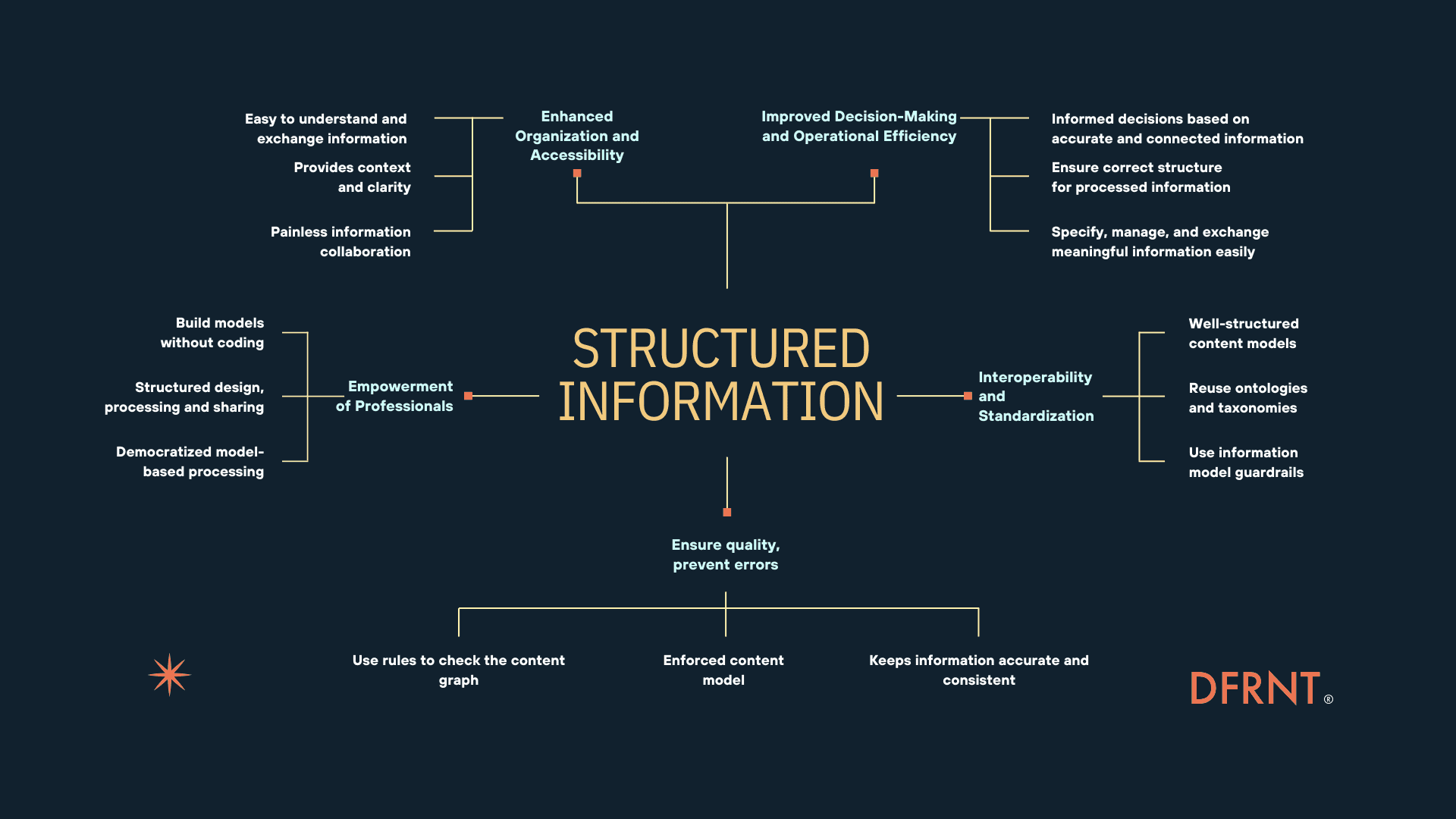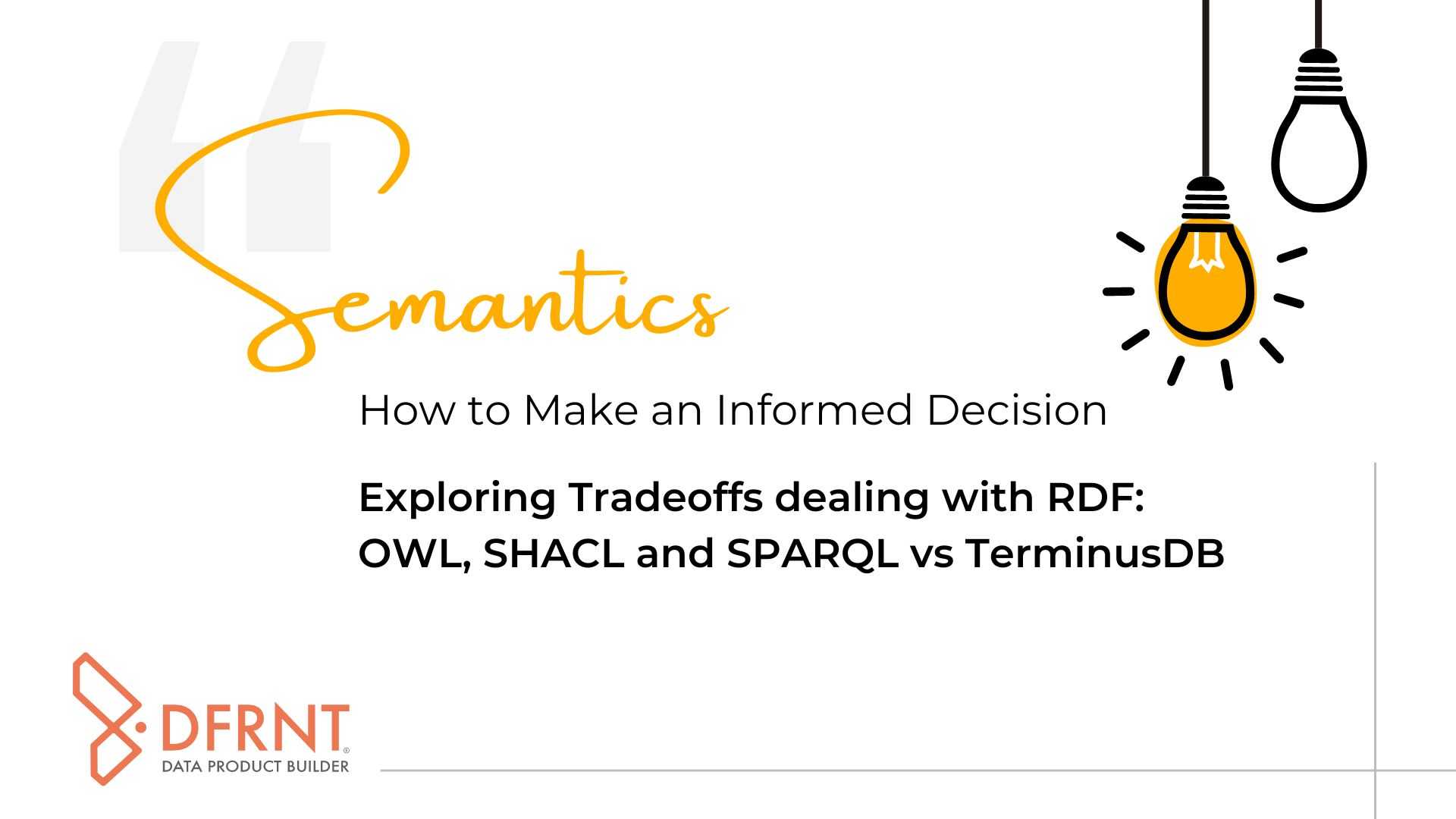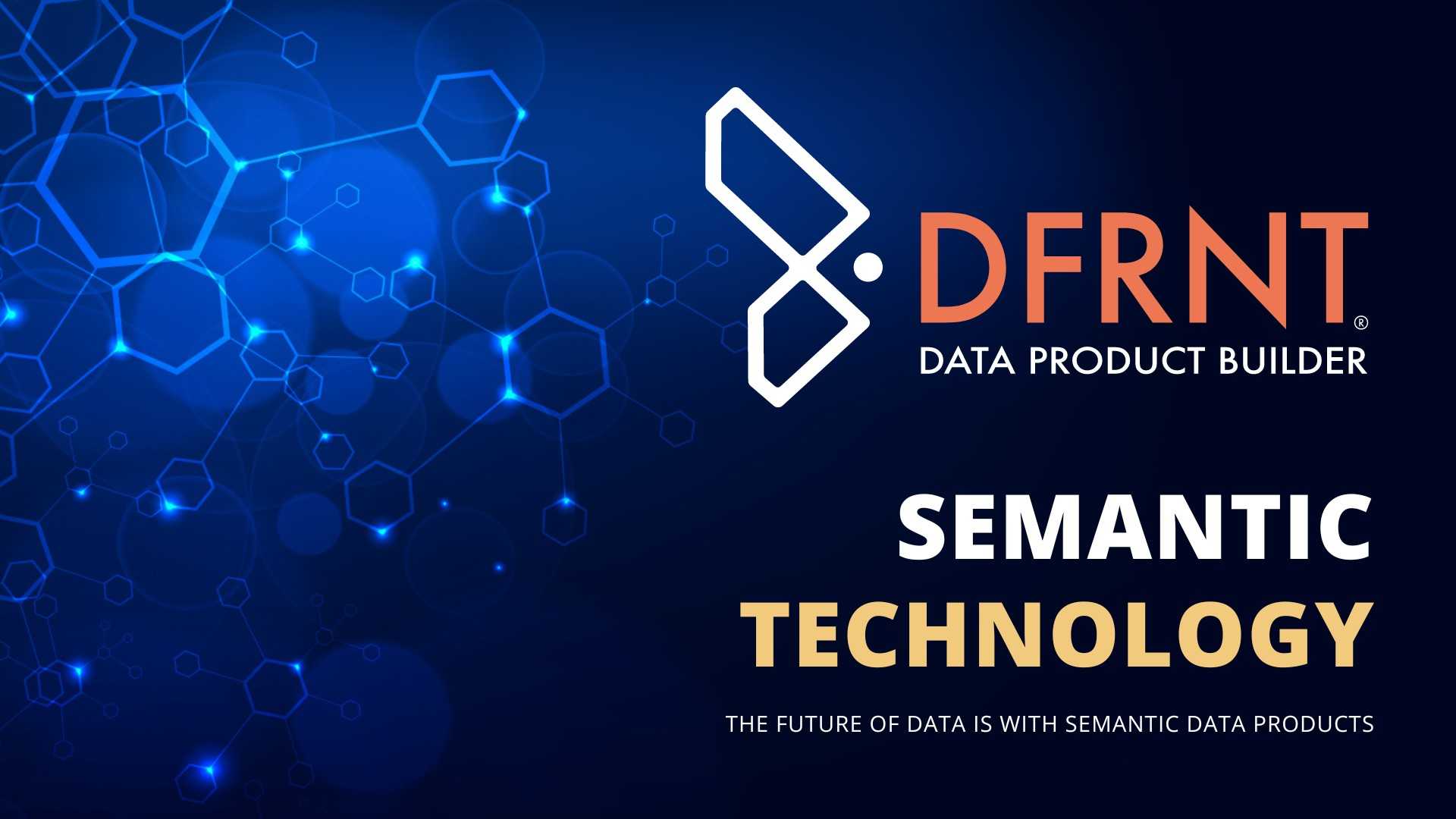Structured Information: Emerging Technologies and Innovation
Philippe Höij in Logical Twins
Information is abundant in our increasingly complex digital world. Structured information, the kind that is meaningful, organized, and easily accessible, remains elusive. Structured information provides significant advantages over just “data” stored in rows and columns.
Well-structured information, such as facts, is tied to a model where each element has a known context, structure, purpose, and connection. Using a structured approach to information takes us from isolated numbers, strings, and values to an ability to produce actionable accurate insights and clear communications across all types of industries.
With dfrnt.com, we believe in a future where every professional regains a generic agency to process structured digital information, through powerful and enabling digital means. This means that business executives, engineers, and developers gain the ability to specify, create, manage, and share structured information in effective ways, in an information-centric—as opposed to an application-centric approach.
Complete, rich, connected, deeply structured, and accurate representations of reality.

This blog explores why high quality structured information matters, what it truly means, and how it is essential for the modern age.
What is Structured Information?
Structured information is information that follows a model. A model that specifies formats, relationships, and constraints of the information. A model-based approach also helps computers understand the meaning of information to enable raw data to be processed in accurate and meaningful ways to help professionals accomplish more in less time.
Picture the structured information of an invoice: with line items, each with its own segments of information with units, quantities, and totals, organized in a readable way. Each piece of data has a role and relationship to the whole, enabling context and easy comprehension. If we were to specify each part of the invoice, we would uncover the underlying “semantic” structure, the information model of the invoice.
The Application-centric Data Approach
Having a strongly typed model-based approach differs from the “traditional” data-oriented approach for information storage, which often leaves businesses with stacks of decomposed data rows in databases where the meaning of information is not provided. The data is easy to retrieve but lacks the necessary context and structure to make it immediately useful and understandable. It gets tied to the application.
The logic of most databases is that the information model for the storage is kept in descriptions of database, not in the database. The names of the tables and the keys that connects them often provides some clues but often leaves more questions than they answer. The complex client-side queries often require a database expert to understand.
A Brief History: From Paper Forms to Databases and Beyond
Historically, information was structured by necessity. Before the 1950s and 60s, organizations relied on physical documents, forms, ledgers, and reports, that demanded structure to convey meaning. Each document was self-contained and comprehensive, with consistent headers, line items, and summaries.
However, as databases replaced paper forms, the complete information container structure was lost to decomposition into relational database tables in exchange for efficient processing by data processing experts with a computer science degree, rather than business or engineering degrees.
How information is stored in databases
Data got divided into tables, relationships were built through connecting tables by matching corresponding integers (primary keys) between tables. Retrieving actionable insights required complex queries across many tables of disjointed information. While effective for storage, this system lacks the flexibility for effective model-based information exchange between systems or teams, sharing complete and controlled objects.
The next evolution of structured information takes us beyond tables. With dfrnt.com, we envision a world where model-based structured information can be exchanged using similar distributed version control and collaboration tools used for code in software development, but by using information models, content graphs, structured information, and universal standards that make data intuitive, recognizable, and actionable.
The Need for Structured Information in Modern Business
Today, businesses grapple with low-quality data, scattered across systems and applications without a cohesive framework. This “data fragmentation” problem hinders decision-making and operational efficiency, as data-points lack context, structure and connectivity that enables it to represent information accurately.
Skilled and experienced professionals build error-checking, processing rules and checks into their information processing work when dealing with information in spreadsheets and databases, so that it remains correct and that errors are prevented. This is a lot of work with traditional tools and a large portion of this tedious work could be much easier to accomplish using a structured and model-based approach.
A model-based structured information approach resolves these issues by:
- Standardized Content Models: Each piece of information is stored using known terms according to a universal structure, making it easier to exchange across platforms. Taxonomies and ontologies enable this work through the Resource Description Framework and unique International Resource Identifiers.
- Structure brings High Quality: Structured information includes metadata—contextual details such as units of measure, standardized dates (ISO8601), and the use of IRI-based IDs—making it easy to process it into meaningful insights.
- Enables Interoperability: With structured content graph models, businesses can share information that is easy to recognize and process, avoiding the need for manual reformatting, re-entry and additional re-processing into target system formats.
- Empowers Users: With user-friendly tools like ours that automatically transforms information models into content forms and model-driven content processing, structured information tooling becomes accessible to bright professionals that understand information but can’t or don’t want to code: from executives to operations managers: to specify, manage, and exchange meaningful information.
Current Gaps and Challenges in Structured Information
While high quality structured information has tremendous potential to empower engineers, business professionals and technical professionals alike, tools for leveraging such a model-based approach are still evolving.
Today’s systems are specialized and centralized. They have narrowly defined models that lack general adaptability for specific use cases. Businesses adapt to standardized processes, often losing some or much of their competitive edge in the process.
Existing solutions for electronic data interchange (EDI) facilitate transport for high volumes of structured information but often lack the adaptability for specific scenarios where business professionals and engineers need to specify, construct, process, validate, analyze and exchange high-value business information in structured, reusable, and reliable ways.
From Representations of Information to Useful Information
In many sectors, professionals still rely on data-oriented tools like Excel spreadsheets and PowerPoint slides to convey structured information. While these tools are great (we use them a lot too), they are merely “representations” of the information.
They lack the underlying structure and relationships to make that information easy to keep accurate, in correct formats and structure, and in a way that prevents mistakes mixing up currencies, counts, spelling, identifiers and other parts of structured information. All error-checking is done manually and only the best of the best check their work consistently.
The DFRNT product line aims to bridge this gap by providing a platform where professionals can define and exchange structured information using a model-based approach, not just as a static raw data representation of it, as tabular formats or in a knowledge graph triples form where it is easy to make mistakes and commit errors.
How we Pioneer Structured Information with dfrnt.com
With dfrnt.com, we develop tools that make structured information accessible to all. Our platform allows users to:
- Model Their Information: Create models around the information, specifying not only the information itself (the content) but also its structure, context, relationships, and dependencies.
- Enter Data Seamlessly: Once the model is set, you can enter data as easily as filling out a form, ensuring the structure is valid to the structure of the model.
- Exchange Information with Ease: Share and exchange structured information with others, ensuring that they receive it in the exact format needed to integrate it into their workflows, thanks to the guardrails of the information model of the content.
This approach makes structured information accessible, scalable, and ready for the modern age. Professionals no longer need specialized database knowledge to exchange data meaningfully, they simply need a model that fits their needs.
From Content to Insights: The Path Forward
As the algorithmic economy unfolds and evolves, the value of structured information will only increase. Model-based structured information allows us to capture the true context of our facts—its time, place, and relevance, and process it accurately by both machines and humans. We say we put deep tech in the human loop.
One of our customers told us our solution provides the semantic operating system for the upcoming meaning-oriented information-centric paradigm. We agree, dfrnt.com provides and empowers professionals with structured information for better insights, efficiency, and collaboration, today.
As another customer put it, by creating their model and content graph using dfrnt.com, they significantly accelerated their content graph journey.
The potential is boundless. We transform today’s painful experiences with messy, fragmented, poorly described, and isolated data into a future with meaningful, empowered, and effective distributed cross-organizational collaboration on high quality structured information using a model-based content graph approach.




